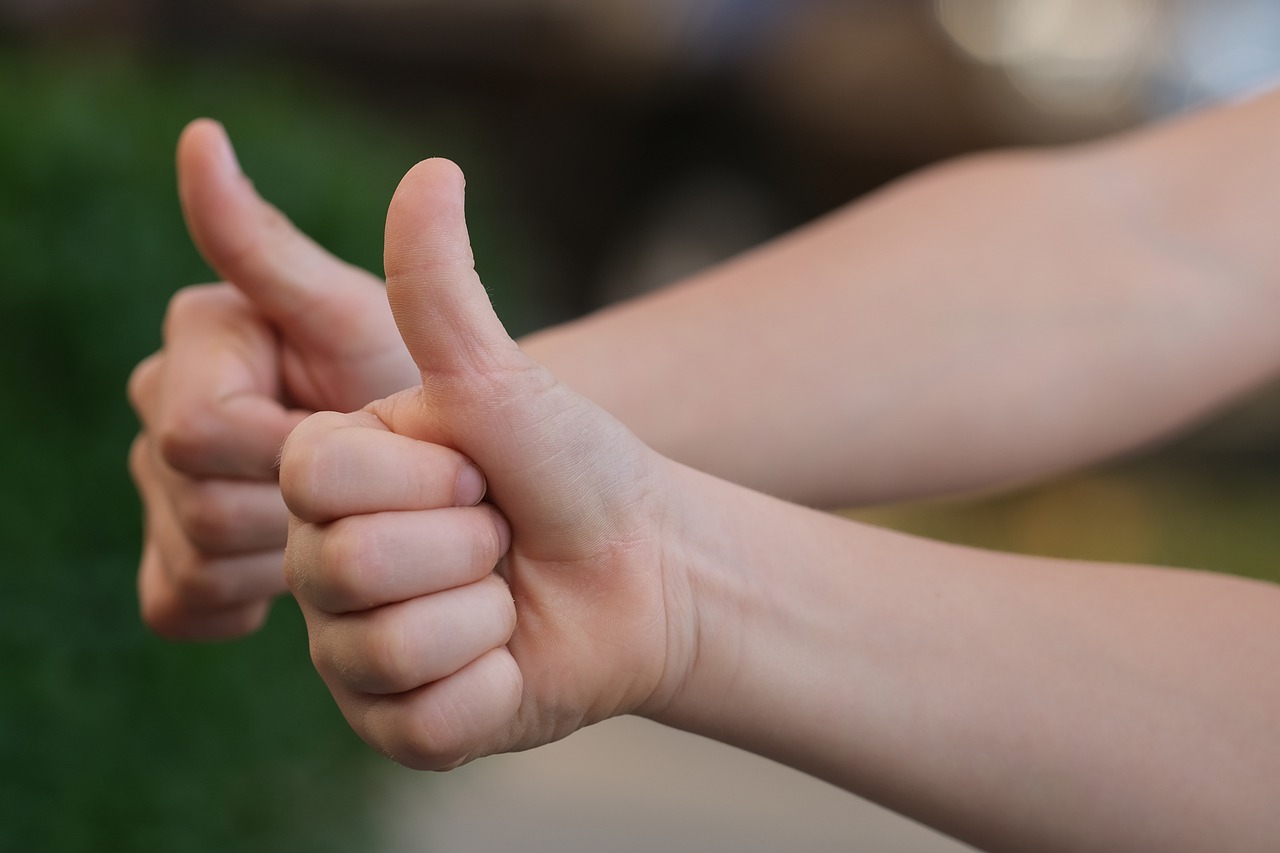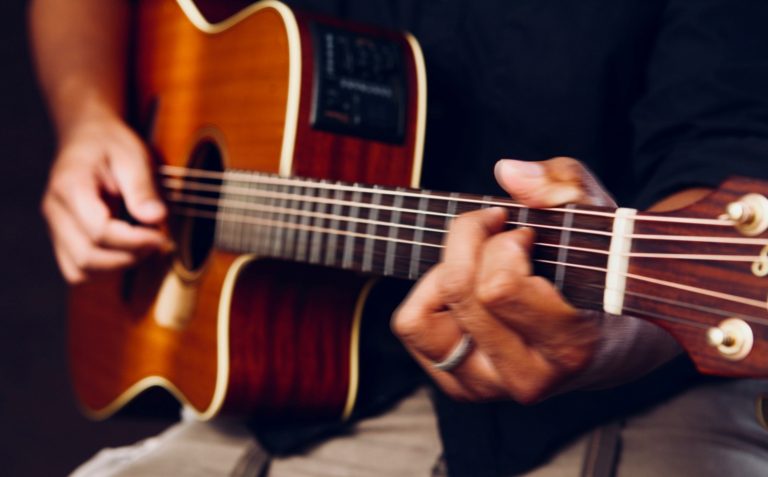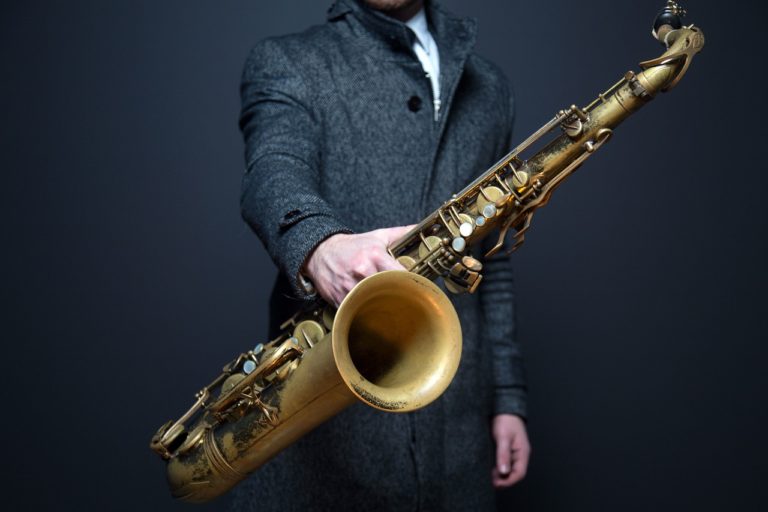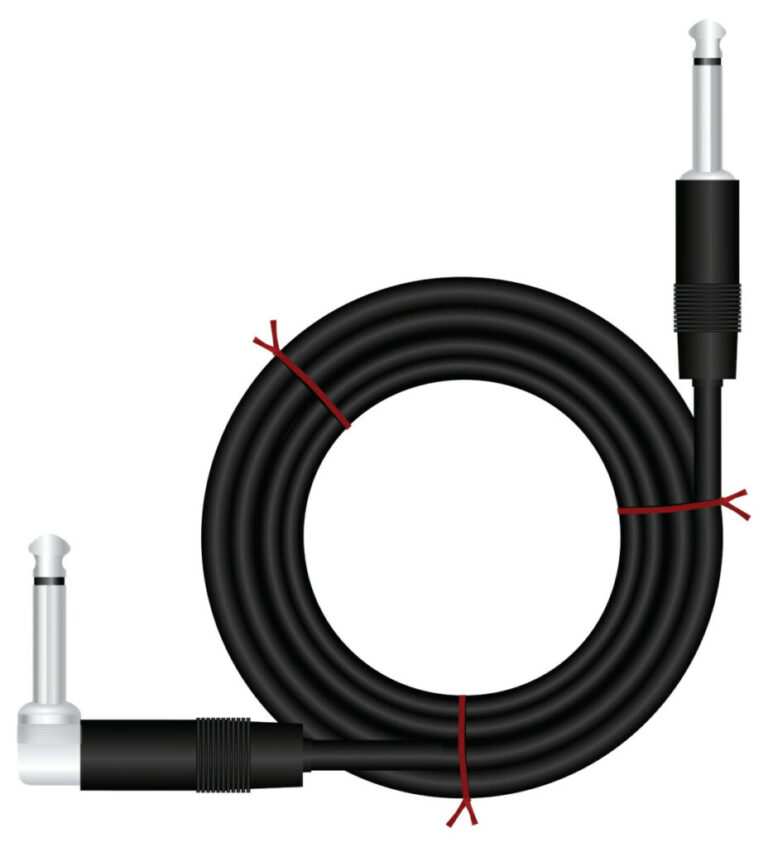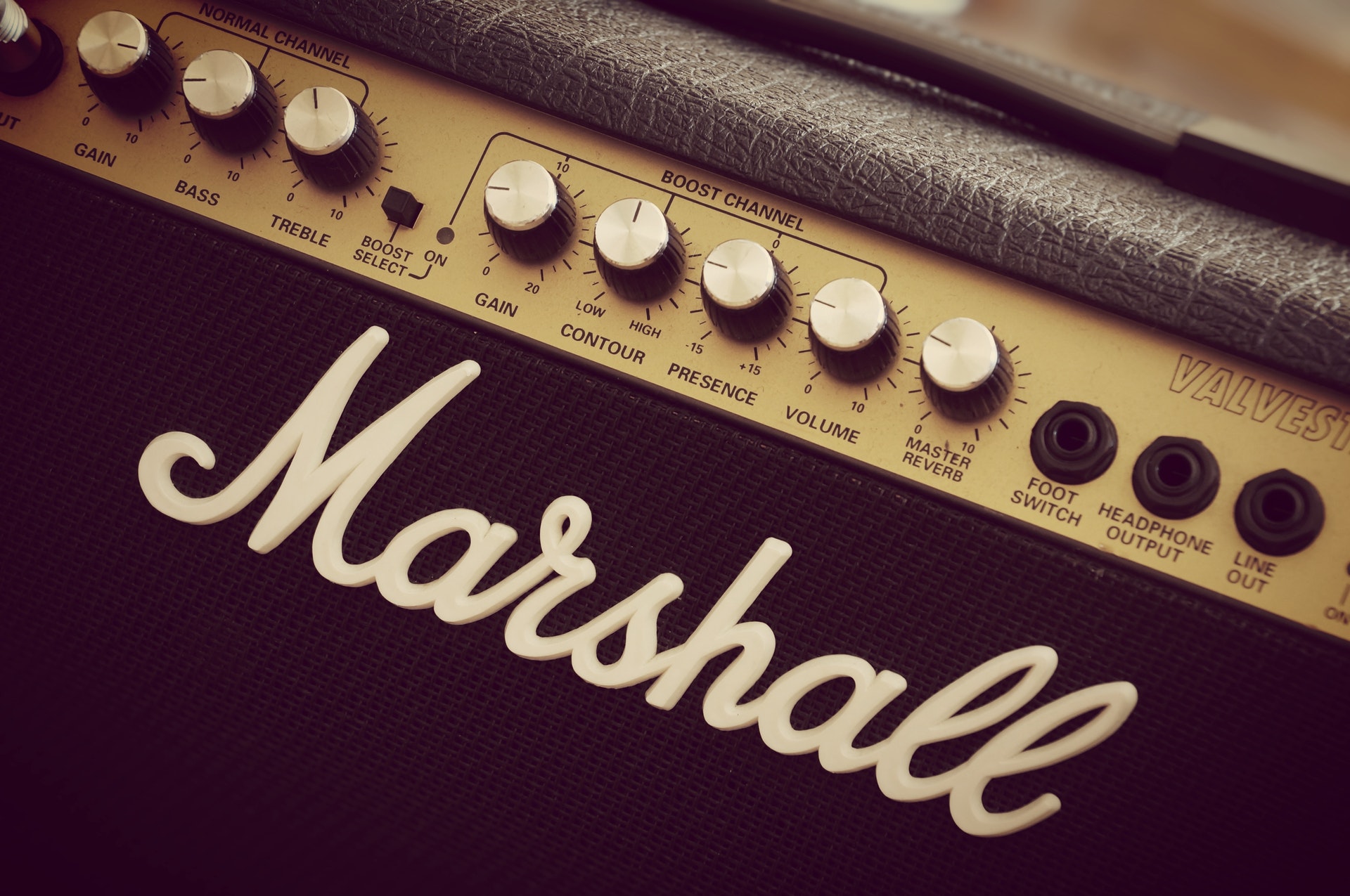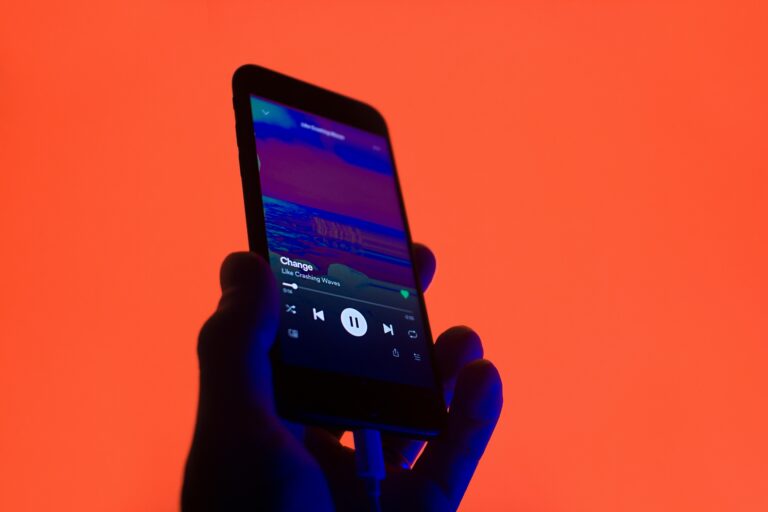Music Hand Signals: The Essential Guide for Musicians
Playing music with others is a thrilling and joyful experience. But if you aren’t sure what to be looking out for, it can quickly turn into a stressful and embarrassing experience. There is an unspoken language of hand signals that have seemingly universal meaning amongst musicians. Understanding these hand signals in music will seriously improve your improvisation skills.
Generally speaking, one person, usually the lead singer or guitarist, serves as the band leader. This person keeps an eye on signals about what to play next, playing louder or softer, speeding up, slowing down, and ending the song. We’re going to break down the ultimate guide to hand signals in music so you can rock out like a pro.
Essential Hand Signals In Jam Sessions
If you and some friends have just started a band or joining some strangers at a club for a quick jam, it helps to have a shared unspoken vocabulary.
You don’t have time to talk through every little detail before playing the next song, and many artists feel things out at the moment. The signals below are common ones to help you get started.
One Finger Out, Spinning in a Fast Circle
Holding an index finger out to the side and making a “barrel” roll motion with the hand is a clear sign to speed things up. The leader feels like the song is dragging and needs to pick up the tempo.
Hand signals are contextual, so it could be for just a particular piece of the song, depending on when you make the hand signal.
One Hand, Slowly Pulsing Down
This sort of looks like your pulsing on an invisible gas pedal repeatedly. Generally, this is a signal to slow things down.
For any tempo-related hand signals, make eye contact with the drummer. Drummers usually control the tempo most.
Putting a Finger To Your Lips
The band leader wants things to quiet down. This signal is effectively the universal sign for “shhh” or quiet. The band leader might also squat a little or move both hands, palms down, towards the ground. This hand sign also indicates that the band should quiet down a lot.
Both Hands, Palms Up Toward the Ceiling
This lifting motion indicates that the band should turn up the volume and get louder. The speed at which the band leader makes this motion shows how quickly the volume increases.
It may be a long, slow crescendo, or it may be a quick and sudden shift. Following the pace, the band leader brings their hands up.
Closed Fist, Raised With the Elbow at a Right Angle
The closed fist raised at a right angle comes from the military hand signal for “stop.” It doesn’t mean to cut it abruptly, though.
If you’ve been playing a song with a repeating phrase near the end, then this signal would indicate that it is the last time through that phrase. It’s essential to know the difference between ending the song and abruptly stopping the music.
Discussing hand signs before practice or a show will avoid an awkward stop.
Flat Hand Slicing Across the Neck
This signal means you should immediately cut a song off. Usually, it means that something is wrong or a problem needs addressing.
If your band leader throws in this hand signal, do not end your music nicely. Just stop playing and resolve the issue quickly.
Twisting Hand, Like Turning Up a Dial
This is another signal to get louder. The specific difference is this usually comes with a finger pointing to a particular band member. It may be that the band leader is struggling to hear the bass guitar, so they suggest to them and “dial things up.”
Twisting Hand, Like Turning Down a Dial
As you can imagine, this is the opposite of the above-noted signal. It indicates that a particular band member is too loud and should turn things down.
It is also usually accompanied by a finger pointing to a specific band member. Sometimes instead of “turning the dial,” the band leader will point to the member and give a thumbs down to mean the same thing.
Pointer Finger Up, Circular Motion, Then Three Fingers Up
This series of signals is usually used at the end of a song to indicate the band should play the refrain three times to end it. If there is a repeated phrase at the end of the song, it’s important everyone knows how many times you will repeat it. Finishing a piece with a phrase (like the chorus) three times is a standard method in live performance. You are more likely to see this hand sign when introducing new musicians to your band.
One Finger Down, One Finger Up
This signal means “one down, one up.” It is usually used later in the song and means playing the chorus twice. The first one will be quiet and restrained, and the second will be full blast and energetic. This contrast is a common way to reinvigorate the song right at the end.
Jazz Hand Signals You Can Use Anywhere
The hand signals above should get you through many standard jam sessions. But if you are moving into some more complicated circles, they may have an even broader vocab of signals. Some of these more advanced signals require you to have a decent knowledge of music theory.
Touching Your Head
This hand signal has its roots in jazz combos and improvisation, and it means to go back to the “head” of the song. The “head” of the song is usually the opening or main melody. Think of it as the main piece of the music that the audience would remember immediately afterward.
Holding Up Three, Four, or Five Fingers
If you’re playing a song you’re unfamiliar with or just riffing and improvising; it is crucial to know where the music is going next. Holding up a certain number of fingers (three, four, five, etc.) indicates which chord the musician should move to next.
Pointing to a Player For a Solo
If a band leader turns and strongly points to you, this means “take it,” as in taking a solo. If you’re new to jamming and improvising, this can feel daunting. The good news is you can shake off this signal with a simple head shake side to side as you would indicate a no to any question.
Pointing Up With One Finger and Making a Circle
Making an upward-facing circle with your finger is the signal for the band to keep running the current groove. The band leader may want to improvise on top of the track. They’ll likely use the fist signal mentioned above to indicate when you need to stop running that groove.
Touching The Bridge of Your Nose
This subtle signal tells the band to take things to the “bridge” of the song. Most of the time, the band will talk about the bridge beforehand. Otherwise, this hand signal can be incredibly confusing.
Raise Four Fingers On Each Hand
This is an old jazz hand signal called the “four and four.” It means each band member will take a turn playing a four-bar solo and alternating it with the drummer.
It might start with the guitarist, then the drummer, and revolve through the entire band. The starting musician depends on where the leader points or a previous discussion.
Number of Fingers Pointing Up or Down Before the Song Starts
This is a tricky one and requires a solid knowledge of music theory. When a band leader holds a certain number of fingers up or down, they communicate the next song’s key.
Fingers held down show how many flats are in the key signature. Alternatively, fingers held up tell how many sharps. For the key of C, the leader usually makes a zero shape.
Making an “X” With Hands or Fingers
This hand signal is an old big band signal for split solos. If the band is too large, then splitting solo sections into shorter half solos allows more players to take solos without dragging the song out forever.
If you would generally play a sixteen-bar solo, then the “X” means split it in half to eight bars and pass it to the next soloist.
Body Language and Other Cues In Live Music
Not everything will come in clear military-like hand signals.Sometimes things will be looser or based on other non-verbal cues.
Paying attention to body language beyond just hand signals builds trust in a band and helps you as a musician excel beyond the basics. Let’s talk about some familiar body language cues to look out for.
Raising Your Head or the Neck of the Guitar
This guitar signal is a common way to end the song. The leader will raise their head or the neck of the guitar and indicate that the song is ending. Then the band members end the song together when the leader drops their head of the guitar neck back down. You can also communicate the intensity of the ending based on how aggressively the leader raises and lowers their head or guitar.
Stepping Up To The Mic or Away From It
Sometimes solos can be started and ended by the vocalist stepping towards or away from the mic. This simple cue often indicates that someone needs to step in and fill with a solo. When the singer steps back up to the mic, the solo should come close, and the band should pick back up on the chorus or verse.
Small Head Shake with Eye Contact
This shake is a simple way of saying, “not this time.” Maybe you’ve played the song before, and you usually take a solo here, but it isn’t going well with the crowd.
The leader may turn and shake their head to you, letting you know to skip the solo since the crowd isn’t very into the song. It may not be very reassuring, but it is best to follow their lead in this instance.
Repeated Nodding
This sign is an encouraging one that means to keep going. If you are in the middle of a killer solo and the crowd is loving it, the leader may tell you to keep it up and make the solo even longer with an energetic nodding of their head. Just be sure you don’t get too carried away and miss their eventual signal to wrap it up.
Hand Signal To Audio Engineers
Whether playing live shows or in the studio, you may need to communicate with an audio engineer, but you can’t stop talking to them. Or they may need to share with you.
Below are some hand signals specific to communication between performers and audio engineers or producers.
Pointing to a Monitor and Pointing Up
This point indicates that the monitor mix or the performers hear of themselves needs to be louder. This signal could get more specific (a specific instrument), but pointing at the monitor then up generally means turning up the whole mix.
Pointing to a Monitor and Pointing Down
Pointing to the monitor and then a finger down indicates that the mix is too loud. Many people warn against pointing with your thumb to avoid confusion. The engineer may not know if you are referencing volume or quality, so use an index finger instead.
Pointing to Your Mic/Instrument than the Monitor
If your mic or instrument isn’t loud enough in the mix and you need a boost for just that specific element, point to the mic or instrument, then gesture to the monitor and the up signal. This gesture lets your engineer know that they should only adjust your level in the mix and not the mix as a whole.
Mixing in an Invisible Cake Bowl
Making a motion as if you are stirring a bowl full of cake batter is sometimes recognized as a signal relating to the reverb in the mix. If you are looking for more or less, you would make the mixing gesture and then indicate either up or down, again using your index finger and not your thumb to avoid confusion.
The Standard “OK” Symbol
Forming your fingers into an “OK” symbol by connecting your index finger with the tip of your thumb and holding the remaining fingers up is a universal confirmation signal. It is important to flash the “OK” sign or another affirmative representation after you have asked for a change from the engineer to confirm that they have fulfilled whatever goal you were seeking.
Using Solfege Hand Signs as a Classically Trained Musician
The Solfege scale is a unique set of hand signs associated with advanced music theory topics. In using these, you encourage the study of music theory, bringing yourself closer to being a classically trained guitarist.
Learning these Solfege hand signs is no different from association with music scales. You might be more familiar with these symbols:
- Do
- Re
- Mi
- Fa
- Sol
- La
- Ti
- Do
The two Do’s deal with differing pitches, starting from the low do and ending with the high do. These hand signs differ based on shape and position. The video below will help you with shape. Otherwise, check out this PDF for a guide.
How Solfege Hand Signs Help You
When learning these hand signs, there are two areas worth talking about that can help your understanding:
- The hand sign helps you recognize the pitch with greater ease
- It would be best if you put your hand at a level to differentiate between Solfege Pitches
While used mainly by music conductors, these hand signs are easily recognizable as a pitch correction tool by conductors. So if your music is sounding a bit flat, you can flash a signal to your buddy without blowing the show.
Plan Hand Signals With The Band Ahead Of Time
Assuming you have a regular band you play with, it is worth setting aside some rehearsal time to discuss hand signals. A particular unspoken vocabulary will likely develop naturally over time, but it never hurts to cement these decisions.
Using every signal above could be way more than your band ever needs. Set some of the basics and maybe consider creating your own communication.
Agree upon things for speeding up and slowing down, getting louder or softer, and bringing a song to an end. These are the most common essential hand signals to understand amongst all the band members.
Tips for Planning Hand Signals Ahead of Time
Like a visual chart, Everyday reminders should be readily available in your practice space. Visual reminders are some of the most vital reinforcement tools in any learning process. Classrooms always have them for a reason.
It is also worth setting boundaries on signals you don’t want to use. Some signs won’t be necessary, but check in with the band and see if there are any guaranteed to fail.
Maybe the band isn’t ready for some old jazz-style hand signals with more complicated routines. Recognize where you fall short, and don’t push too far beyond that.
You and the bandmates should also thoroughly discuss who to look for signals. While it is often the singer or lead guitarist, voting and making an explicit agreement is worth voting.
The drummer is usually not the most fantastic choice given that they are in the back and their hands are busy. Otherwise, it is possible that a different band member may be better suited to lead.
There is no need to fall back on the vocalist or guitarist. Bass, keyboard, and anything else could also be your leader for hand signals.
The most important thing is that they are positioned on stage in a clear line of sight for other band members and the audio engineer. These are all important considerations when planning to crush your next gig.
Other Forms of Band Communication – In-Ear Monitors
Most of the hand signals above can be easily adapted if you wear in-ear monitors at a live gig. You may be wondering, “what are in-ear monitors.” An in-ear monitor is an earpiece a musician wears to get clear audio of the band’s instrument and work.
In-ear monitors eliminate the need for a wedge-style onstage monitor. They provide an added advantage of eliminating extra noise on stage and delivering a precise volume regardless of where each musician is on the stage. You would effectively send the same mix transmitted to an onstage monitor to each musician’s in-ear monitor.
You can easily translate the hand signals above related to communication with an engineer to musicians wearing in-ear monitors.
How Do In-Ear Monitors Work?
In-ear monitors are like standard headphones but usually with more audio drivers. The monitor is connected to a wireless receiver pack that the musician usually wears on their person. It receives a signal from the mixer and sends it to the in-ear.
Most in-ear monitors have noise-canceling technology similar to a lot of high-end headphones. This feature helps block out external sound and allows the musician to focus entirely on the mix they hear.
It keeps musicians on track but can make it tough to interact with the crowd. Sometimes musicians find it easiest to remove one monitor and hear the crowd.
Who Should Use In-Ear Monitors?
Musicians typically wear in-ear monitors for a live audience at a larger venue. Smaller venues prefer an onstage monitor. An audio engineer generally controls them. However, many musicians prefer to have personal control of their mix.
Personal mixers (another word for in-ear monitors) have become increasingly affordable. These eliminate the need to communicate with an audio engineer via hand signals and allow musicians to adjust their mix levels. Using personal mixers is ideal for band members who favor control over what they hear.
Benefits of Ear Monitors Over Hand Signals
In-ear monitors also offer a tremendous benefit in mobility. A wireless in-ear monitor will provide a more consistent sound for musicians who like to move around a lot than an onstage monitor. It may be more challenging to hear the further away you get with the monitor, but the in-ear won’t change no matter where you go.
Onstage wedge monitors are also cumbersome and take up valuable stage space. There are more wires and less room for you to dance and show off as a musician. In-ear monitors free up this valuable stage space for you to strut and do your best. Though you do have to allow room for the personal mixer.
You’ll still want to have an audio engineer on-site to ensure your gig’s highest quality and most reliable sound. Never rely exclusively on individual mixes if you can avoid it. But having both the sound engineer and the individual mixes is the best of both worlds. You can communicate with the engineer and make slight personal adjustments as needed in real-time.
You can count on the engineer to handle large changes and any predetermined mix decisions you may have discussed. It is possible that once the crowd is in, though, the venue will sound completely different. You may need to make small changes that are hard to communicate with hand signals. A personal mixer and in-ear monitor will come in handy.
Use the Hand Signals That Work For You
Every musician will have unique communication preferences. If you play regularly with a group, you will likely come up with your unspoken code of communicating. If you’re jumping in with a group of strangers for a quick jam, then you can count on several of the hand signals above showing up.
It is vital that you feel confident in what you pick. And if you don’t know what something means, there is no shame in asking. Always better to ask and learn than to fake it and mess up. Follow along when you can, ask questions when you can’t, and you’ll be jamming like a pro in no time.

